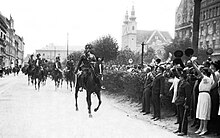
Sopron is a city in Hungary on the Austrian border, near Lake Neusiedl/Lake Fertő.

The Treaty of Trianon often referred to as the PeaceDictate of Trianon or Dictate of Trianon in Hungary, was prepared at the Paris Peace Conference and was signed in the Grand Trianon château in Versailles on 4 June 1920. It formally ended World War I between most of the Allies of World War I and the Kingdom of Hungary. French diplomats played the major role in designing the treaty, with a view to establishing a French-led coalition of the newly formed states.

Gyula Gömbös de Jákfa was a Hungarian military officer and politician who served as Prime Minister of Hungary from 1 October 1932 to his death.

Moson was an administrative county (comitatus) of the Kingdom of Hungary, situated mostly on the right (south) side of the Danube river. Its territory is now divided between Austria and Hungary, except a small area which is part of Slovakia. Moson is also the name of a town, nowadays part of the city Mosonmagyaróvár, Hungary.

Sopron was an administrative county (comitatus) of the Kingdom of Hungary. Its territory is now divided between Austria and Hungary. The capital of the county was Sopron.

Lajtabánság, or the Banate of Leitha, was a short-lived western Hungarian state in the region where the Austrian federal state of Burgenland now exists. It existed between 4 October and 10 November 1921, following the Treaty of Trianon and the departure of the rump Kingdom of Hungary's army and after the Sopron plebiscite was held in the area according to the Venice protocol.
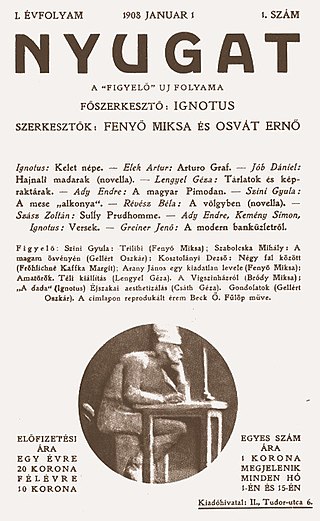
Nyugat, was an important Hungarian literary journal in the first half of the 20th century. Writers and poets from that era are referred to as "1st/2nd/3rd generation of the NYUGAT".

Gyula Illyés born Gyula Illés was a Hungarian poet and novelist. He was one of the so-called népi writers, named so because they aimed to show – propelled by strong sociological interest and left-wing convictions – the disadvantageous conditions of their native land.

Vas was an administrative county (comitatus) of the Kingdom of Hungary. Its territory is now divided between Hungary, Austria and Slovenia.
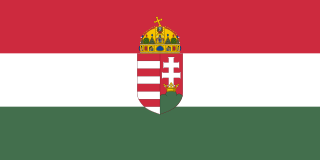
The Kingdom of Hungary, referred to retrospectively as the Regency and the Horthy era, existed as a country from 1920 to 1946 under the rule of Miklós Horthy, Regent of Hungary, who officially represented the Hungarian monarchy. In reality there was no king, and attempts by King Charles IV to return to the throne shortly before his death were prevented by Horthy. Hungary under Horthy was characterized by its conservative, nationalist, and fiercely anti-communist character. The government was based on an unstable alliance of conservatives and right-wingers. Foreign policy was characterized by revisionism — the total or partial revision of the Treaty of Trianon, which had seen Hungary lose over 70% of its historic territory along with over three million Hungarians, who mostly lived in the border territories outside the new borders of the kingdom, in the Kingdom of Romania and the newly created states of Czechoslovakia and the Kingdom of Serbs, Croats and Slovenes. Republican Austria, the successor of the former other half of the dual monarchy also received some minor territory from Hungary. Thus the post-1918 Kingdom can be described as a rump state. Hungary's interwar politics were dominated by a focus on the territorial losses suffered from this treaty, with the resentment continuing until the present.
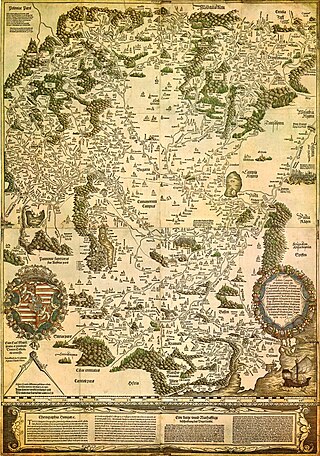
At the outbreak of World War I in August 1914, Hungary was part of the Dual Monarchy of Austria-Hungary. Although there are no significant battles specifically connected to Hungarian regiments, the troops suffered high losses throughout the war as the Empire suffered defeat after defeat. The result was the breakup of the Empire and eventually, Hungary suffered severe territorial losses by the closing Trianon Peace Treaty.
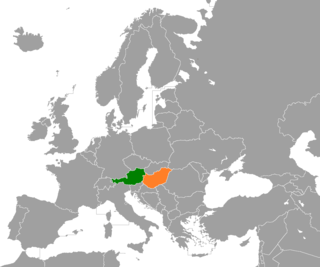
Neighbourly relations exist between Austria and Hungary, two member states of the European Union. Both countries have a long common history since the ruling dynasty of Austria, the Habsburgs, inherited the Hungarian throne in the 16th century. Both were part of the now-defunct Austro-Hungarian Empire from 1867 to 1918. The two countries established diplomatic relations in 1921, after their separation.

Jenő Rákosi was a Hungarian writer, journalist, theater director, editor, and a member of Hungarian Academy of Sciences and Kisfaludy Society and a member of the Petőfi Association.

Ilona Dávid economist, Chairwoman of the Board of Directors of GYSEV Zrt. since 2010. President and CEO of Hungarian State Railways Zrt. from 2012 to 2018, Chairwoman and chief executive officer of Volánbusz and DAKK Zrt. as well as Chairwoman of the Boards of other five regional bus transport centres. Since 2017, for the fourth year in a row, she has been ranked in the list of Forbes one of the most influential Hungarian women.
Sopronbánfalva, also known as Bánfalva, is a former village that is part of the city of Sopron, Hungary, since 1950. It is also called Kertváros or Sopron-Kertváros. It is located west of the city center, at the northeastern foot of the Sopron Mountains, next to the road connecting Sopron with Brennbergbánya.
The following lists events in the year 1919 in Hungary.
The following lists events in the year 1918 in Hungary.
The following lists events in the year 1920 in Hungary.
The following lists events in the year 1921 in Hungary.

